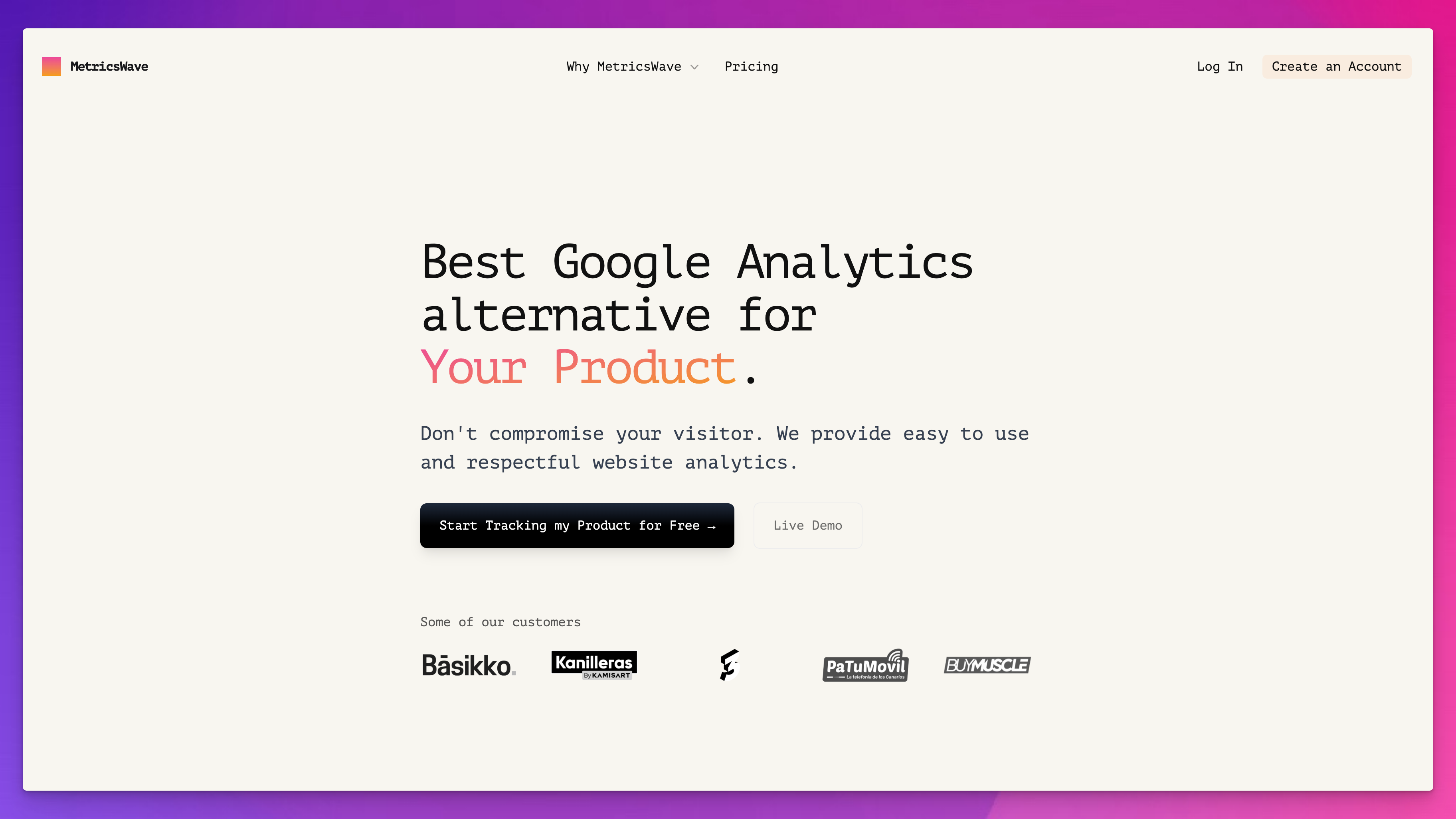
At MetricsWave we had a table in which we recorded all the visits in MySQL. Right now MetricsWave is receiving around 3M visits per month, so this table is growing very quickly lately and it has been noticed in the user experience.
Table of contents:
Luckily, the availability of the service has not been affected at any time, but the dashboard loading time could sometimes exceed 30 seconds, and sometimes it even failed and forced you to refresh the screen. page several times.
Furthermore, all of this was being run on a single EC2 instance (a t4g.small, to be exact) and, furthermore, it was all together, both the basic user data, such as visits, the frontend and the backend. This should not be a problem today, but it is a matter of time.
Before getting to work, let's see how we are saving the data.

A visit is, more or less, this in the database.
They are pre-calculated data that allow us, if we want to generate a graph, to do the query in a simple way and directly return the data to the front without any transformation.

Using the correct indexes, the data would be accessible and to save we simply have to search or create the indicated record and increment the score.
The data structure, in general, was good. There was some index that could be improved, but little else. The problem, having ~25M records in a single table made it very difficult to change the structure and add or remove any indexes.
With this basis, the reading speed had to be improved, without increasing the server. It was very easy to increase the size of the machine, but for now, it is something I want to avoid.
Looking at the app usage data, I noticed that most of the queries users make are for the most recent data. The last 7 days, 2 weeks or a month, they rarely query data from 1 year ago or earlier.
So the decision was clear, the new data has to be more at hand. We start with a partition.
We are going to put the recent data in a "hot" table and we keep the old data as history. Right now MetricsWave doesn't offer any option to import data from previous visits, so if you think about it, old tables are going to be read only.
In the "hot" table with current data, more will be written and read, but since there is less data, access is instantaneous.
Another problem that I saw in the app is that, many times, more data than necessary was being consulted.
When the data was requested to see a certain parameter, for example the origin of the visits, other nearby parameters were also returned, such as the country, the browser, or the destination page.
Obviously, this is unnecessary and only slows down data access.
Obviously, by having the data separated in two different databases, we now have to change how the backend queries this data.
We have to be able, depending on the date range that is being requested, we have to be able to go to one DB or another, or both, and mix the data when giving a response.
There is some extra work in the backend, but right now the project is ready to work and mix visit data in several different databases, so, in a year, if the table continues to grow, scaling is very easy.
Do you own a company or need help with your Laravel project? I can help you with that. Check the plans and let me know if you have any questions.
Get 1 month free with yearly plan during checkout.
$ 3 ,995
/m
What's included:
$ 5 ,995
/m
What's included:
Ok, just book a call now.
Good question! For starters, the annual cost of a full-time senior-level developer now exceeds $100,000, plus benefits (and good luck finding one available).
Aside from that, you may not always have enough work to keep them busy at all times, so you're stuck paying for time you aren't able to utilize.
With the monthly plan, you can pause and resume your subscription as often as you need to ensure you're only paying your developer when you have work available for them.
No, once subscribed you're able to request as many things as you'd like, and they will be delivered one by one.
Delivery will always be fast without compromising quality. Very complex requests will be divided into smaller products for continuous delivery.
Always, before starting to work, we can make a planning so that you know, before starting, when each change will be delivered.
You'll work directly with me, the founder and only person behind DeveloperJoy.
We understand you may not have enough work to fill up entire month. Perhaps you only have one or two requests at the moment. That's where pausing your subscription comes in handy.
Billing cycles are based on 31 day period. Let's say you sign up and use the service for 21 days, and then decide to pause your subscription. This means that the billing cycle will be paused and you'll have 10 days of service remaining to be used anytime in the future
I had experience making products with PHP, Go, and JavaScript/TypeScript.
Also I feel really comfortable working with WordPress, Laravel, Symfony, Vue.js, React, Svelte, and more.
Mail me and we will see how best to collaborate.
You can make this request by email, sharing a task board with me or, depending on your plan, by call or Slack.
That's fine. You can pause your subscription when finished and return when you have additional requests needs. There's no need to let the remainder of your subscription go to waste.
Due to the high quality nature of the work, there will be no refunds issued.